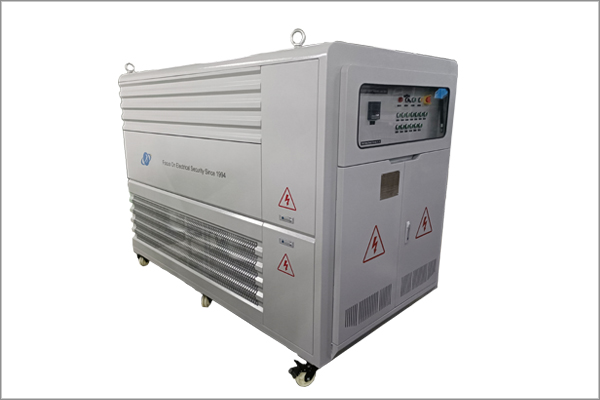The main application of resistive load bank
Time:2024-06-03
As a kind of electronic test equipment, the resistive load bank plays a vital role in many fields. Its main features include a wide range of resistance values, high stability, strong programmability, strong adaptability, good durability and easy operation, etc. These features make the resistive load bank has a wide range of applications in the field of electronic testing.
First, the basic overview of resistive load bank
Resistive load bank, also known as resistive load bank or resistive load bank, is an electronic test instrument, mainly used to simulate the load on the circuit. It can test and calibrate power supplies, power amplifiers and various electronic devices by providing resistors with different resistance values to simulate various load conditions. The resistive load bank is composed of multiple adjustable resistors, capacitors, inductors and switches to generate different resistors, capacitors and inductors to simulate different loads.
Second, the main application of resistive load bank
Power supply test
Resistive load banks can be used to test and calibrate various power supply devices such as UPS, generator sets, etc. By simulating different load conditions, it is possible to test the load capacity, full load capacity, three-phase unbalanced load capacity, instantaneous power change and overload capacity of the power supply equipment. This test method can effectively improve the performance and reliability of power supply equipment.
Generator test
Resistive load banks are especially suitable for testing generator sets. Since the resistive load bank can convert all the energy generated by the power supply into heat, the generator can be tested at 10% capacity, resulting in significant savings in test time and cost. In addition, the resistive load bank can also prevent the diesel generator from losing effectiveness due to wet pile, and improve the service life of the generator.
Electronic equipment testing
Resistive load banks can also be used to test and verify the performance and stability of other electronic equipment, such as amplifiers, inverters, etc. By simulating different load conditions, it is possible to test the operating state of these devices under different loads to assess their performance and reliability.
Automated testing
Modern resistive load banks typically have microprocessor control and programmable capabilities that can be programmed through a digital interface for automated testing. This can not only improve the test efficiency, but also reduce the impact of human factors on the test results, and improve the accuracy and reliability of the test.
Extreme environment test
Some resistive load banks have high or low temperature operation capabilities and are suitable for extreme environments or special applications. This test method can help users understand the performance and reliability of equipment in extreme environments, and provide strong support for product design and production.
Iii. Summary
As a kind of electronic test equipment, the resistive load bank has been widely used in power supply test, generator test, electronic equipment test and so on. Its high precision, stability and repeatability make the test results more accurate and reliable. At the same time, the programmable control and automatic test function of the resistive load bank also improve the efficiency and accuracy of the test. With the continuous development of electronic technology, the application range of resistive load banks will be more extensive, bringing more convenience and development opportunities to the field of electronic testing and calibration.
News Recommendation
-
 2024-09-11
2024-09-11TRIUMPH LOAD EXHIBITING AT Enlit Europe 2024 -BOOTH 7.H08
-
 2023-04-21
2023-04-21TRIUMPH LOAD EXHIBITING AT DATA CENTER WORLD GERMANY 2023-BOOTH F909
-
 2023-04-06
2023-04-06TRIUMPH LOAD EXHIBITING AT ELECTRIC POWER TECH KOREA 2023 – Booth G109
-
 2022-05-05
2022-05-05What is the role of ac load bank for power supply?
-
 2022-05-05
2022-05-05What is the role of the load bank?


